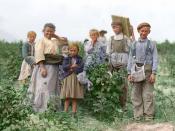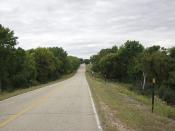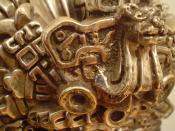Immigration to the United States has brought changes in cultural roles and practices for many immigrant communities. Some of these are reflected in the change of labor practices, family structures, and the efforts of reproducing cultural symbols. Jacqueline Hagan discusses in her book Deciding to be Legal the effects of resettlement of Mayan communities, and gives us insight how the Mayan community is changed by these forces.
The men of the Totonicapan Maya community are the family members who settled in Houston first to find jobs, and the rest of the family followed later in stages. Many male immigrants have faced a tremendous change in their labor practices. One of the biggest changes for Mayan men is the transformation from skilled workers to unskilled laborers.
The transformation has greatly affected the men's role in the Mayan community. In their homeland Mayan men were experienced in farming. They were also experts in producing textiles, such as weaving, and were trained in tailoring.
Their engagement in selling and trading created the economic living basis for their family; therefore the men were the main provider for the family in their home community. Many men came from rural areas to San Pedro to sell their produce and artisan products. Settling in Houston the Mayan men were not able to transfer their skills, because the labor demands in Houston are profoundly different then the one in the homeland.
Houston is an industrial area in urban setting and most jobs are based on the city's industrial and service sector economy. Unskilled laborers mostly find work in factories or in service sectors such as janitors, day laborers, cooks, and maintenance workers. As Hagan points out in her research "The occupational structure in Houston does not allow for the maintenance of artisan production. None of the Totonicapan Maya...


